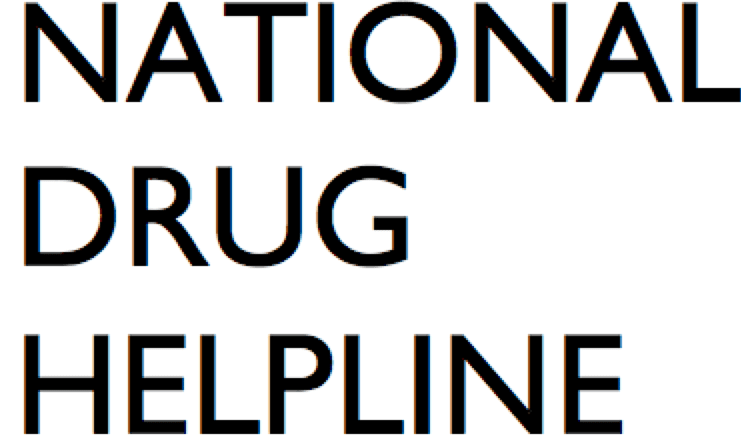The Affordable Care Act (ACA) has ensured greater access to alcohol and drug rehab through major expansions in coverage, regulatory reforms that require the inclusion of addiction treatment, and requirements for addiction treatments to be considered on par and integrated with mainstream healthcare. [1]
Kaiser Permanente is a leading healthcare provider in the United States that offers a range of not-for-profit health plans. Substance abuse and mental health services are considered essential health benefits in the US. All marketplace plans, including Kaiser Permanente plans, are required to cover these services at least partially. Some of the services that may be covered by your health insurance policy include inpatient and outpatient services for substance use disorder treatment and behavioral health treatment with psychotherapy and counseling. [2] While most plans cover at least some of the costs of inpatient and outpatient drug treatment, coverage varies by state and your particular plan.
Kaiser Permanente: Company Overview
Kaiser Permanente was founded in 1945 and currently serves nearly 12.5 million members in 8 states (Washington, Oregon, California, Colorado, Georgia, Maryland, Virginia, Hawaii) and the District of Columbia.[3] The company’s mission is to provide affordable, high-quality health care to its members and the communities it serves.
Kaiser Permanente employs more than 200,000 people and has a dynamic team of 23,000 physicians and 63,000 nurses that provide services at 39 hospitals and 715 medical offices. The team is supported by cutting-edge technologies and state-of-the-art healthcare delivery systems.
While it is by no means the largest healthcare provider in the United States, Kaiser Permanente is one of the country’s leading healthcare providers. Its annual operating revenue in 2019 was $84.5 billion.
Kaiser Permanente Resources for Substance Abuse
Kaiser Permanente offers various resources to its members who may have a problem with drug or alcohol use. One way to get started with recovery is to contact your primary care physician, who can provide treatment options and direct you to resources in your community.
Kaiser Permanente Mental Health provides access to licensed mental health clinicians who will work with your primary care physician to provide assessment, therapy, medications, and inpatient or residential care for mental disorders. However, members do not need a referral from their primary care provider to receive care from Kaiser Permanente Mental Health. Some of the common conditions treated at Kaiser Permanente Mental Health specialty centers include anxiety, depression, bipolar disorder, panic disorder, obsessive-compulsive disorder, PTSD, and schizophrenia. [4]
To assist members who need substance abuse treatment, Kaiser Permanente operates a resource line. This is a free service where members can register for classes, request printed information, and be directed to further resources in their community. Volunteer staff can answer your questions and provide guidance on weekdays from 9 a.m. to 4 p.m. You can call the Kaiser Permanente Resource Line on 206-326-2800 in the Seattle area and 1-800-992-2279 outside Seattle or write an e-mail to kpwa.resource-l@kp.org. [5]

Levels of Care for Substance Abuse Treatment
People who are struggling with addiction need professional care from experts in substance use disorders. Addiction is a complex disease, and there is no one-size-fits-all solution. Keeping this in mind, the American Society of Addiction Medicine (ASAM) has defined different levels of care with varying intensities of services. The goal is to provide standardized substance abuse treatment and a continuum of care. [6]
- Level 0.5 care consists of early intervention services such as education and resources for people who are at a high risk of developing addiction but do not yet meet the diagnostic criteria for a substance use disorder.
- Level 1 care consists of outpatient services where addiction treatment is provided in a non-residential setting while the patient continues living at home. Adults receive up to 9 hours of therapy and adolescents up to 6 hours of treatment every week.
- Level 2 care consists of intensive outpatient or partial hospitalization services that also take place in a non-residential setting but with more treatment hours compared to an outpatient program. This level of care is appropriate for people with co-occurring substance abuse and mental health disorders. It can also serve as a step-down for people who have completed inpatient rehab.
- Level 3 care consists of inpatient or residential services where patients live on-site in a rehab facility and receive round-the-clock care and supervision. The duration of the treatment varies from 30 to 90 days. This is usually a highly structured program with therapy, activities, group counseling, and medical care spread throughout the day, leaving very little free time.
- Level 4 consists of medically managed intensive inpatient care. This level of care is suitable for people with severe substance use disorders who have a complicated withdrawal syndrome that requires stabilization with 24-hour medical monitoring and care.
Kaiser Permanente Scope of Policy Coverage
Individuals with a Kaiser Permanente healthcare plan can obtain various levels of care for substance use and mental health disorders. Exact coverage varies from policy to policy.
As an example, the Kaiser Permanente Platinum HMO plan for residents of California provides comprehensive coverage for mental health services and addiction treatment, including inpatient psychiatric hospitalization, individual and group outpatient mental health treatment, inpatient detoxification, and individual and group outpatient substance use disorder evaluation and treatment. [7]
Choosing a Plan
Kaiser Permanente offers the entire gamut of health plans, from low-premium plans to comprehensive plans with maximum provider choice. There are 3 main types of health plans: individual and family plans, group or employer plans, and Medicare plans. In each of these, the coverage can vary from state to state and region to region. [8]
Individual and family plans (Bronze, Silver, Gold, Platinum) range in monthly premium as well as the amount of out-of-pocket expenses (co-pays and deductibles). Not surprisingly, the more comprehensive the coverage, the higher the premium. Deductible plans require the member to pay for services until the deductible is met. For example, if the deductible in a member’s plan is $250 and addiction treatment costs $1,000, the member will be responsible for the first $250 and Kaiser Permanente will pay $750. Co-pay plans have no deductible amount, but members are required to partially pay for services received.
Group plans provide health insurance to employees of a company. The monthly premium is often deducted directly from the member’s paycheck. There are various options for this type of health coverage, including traditional deductible plans, HMO plans, PPO plans, and out-of-area plans for individuals living outside the Kaiser Permanente coverage area.
Kaiser Permanente Medicare Plans are HMO plans that provide coverage to individuals above the age of 65.
Kaiser Permanente HMO vs PPO Plans
If you’re thinking about signing up for a Kaiser Permanente healthcare plan, one of the decisions you’ll have to make is to choose between an HMO and PPO plan. An HMO (health maintenance organization) plan is a more cost-effective choice, since it is based on a network of hospitals and healthcare providers who coordinate their services in return for a fixed payment rate. If you’re in an HMO plan, however, you can only receive care from in-network providers. You will also need to choose a primary care provider to manage your health and refer you to specialists when needed. These specialists will also need to be in the HMO network. However, if you require services that are unavailable in your network, you may be referred to outside specialists. HMO plans typically incur a lower monthly premium and lower out-of-pocket expenses for services and prescriptions. Also, there’s the convenience of having one doctor to coordinate your health care.
A Kaiser Permanente PPO (preferred provider organization) plan is more flexible and allows you to choose which doctors you see. The medical care you receive is more affordable if you stay in-network, but you have the option of seeing an out-of-network physician. You can even visit specialists who are out-of-network without a referral from a primary care provider. PPO plans place more responsibility on the member for coordinating and managing health care, since there is no assigned primary care physician.
Paying Out-of-Pocket Costs
Even the most comprehensive Kaiser Permanente plans are unlikely to cover the entire expense of mental health and substance abuse treatment. Clients will undoubtedly be responsible for some out-of-pocket costs. However, several private pay options can help make addiction treatment affordable for you. Speak to the National Drug Helpline on 1-844-289-0879 to find out more about your treatment options, the estimated cost of the treatment, and what costs are covered and not covered by your Kaiser Permanente insurance policy. Some of the financial assistance services that may be available to you include:
- Private funding from friends and family
- Online fundraising through GoFundMe and other such campaigns
- Scholarships and grants from rehab facilities
- Government-subsidized programs
- Deferred payment plans
- Sliding-scale payments
- Loans from third-party lenders
Last updated: March 9, 2023
References
